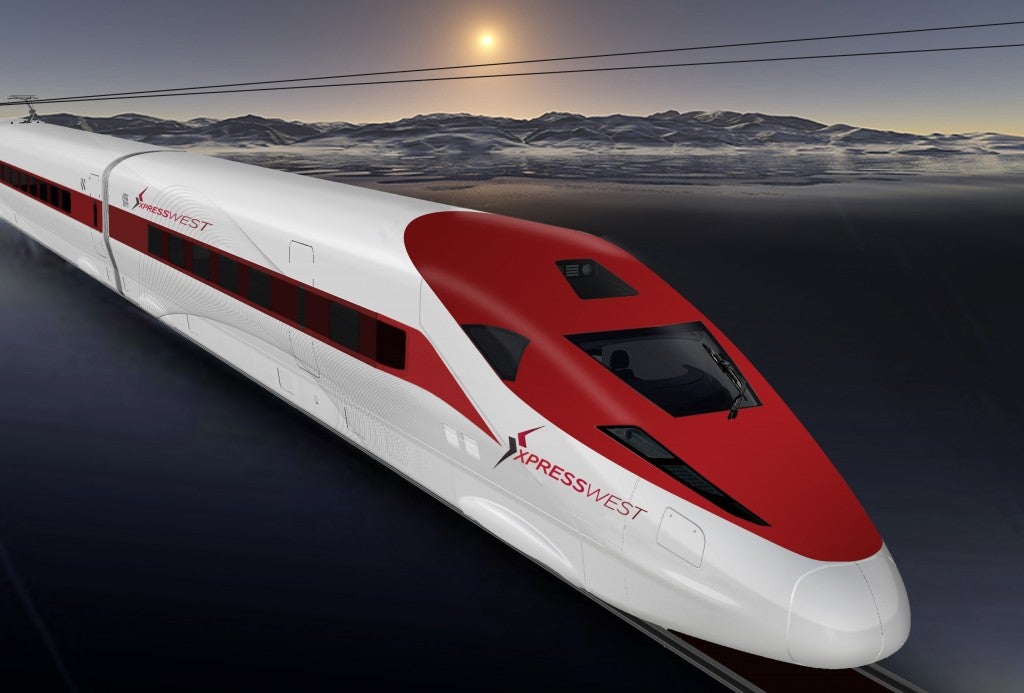Outdated forecast data containing rosy economic assumptions and signaling potential cost overruns plagues the planned $6.9 billion XpressWest high-speed rail project connecting Victorville, CA, to Las Vegas, NV, according to a new Reason Foundation report. If it fails, the seriously flawed plan could put taxpayers on the hook for billions.
Adrian Moore, vice president of the Reason Foundation, explains:
XpressWest is being marketed as a private project. Yet nearly all of the money to build it would come from a taxpayer-guaranteed loan of up to $6.5 billion. If the train fails, the company defaults on the loan and taxpayers are stuck with the losses. Politicians should learn from Solyndra, which was actually a much smaller loan than this would be. This train is far too risky to gamble taxpayer money on.
This is not the first time the alarm has sounded, calling this project’s financial viability into question.
In September 2011, Ronald D. Utt, senior fellow at Heritage’s Thomas A. Roe Institute for Economic Policy Studies, described the XpressWest project—then dubbed “DesertXpress”—as a “boondoggle” waiting to happen:
DOT is now in the process of deepening its commitment to irresponsible rail projects by contemplating an RRIF loan of $6 billion to an HSR boondoggle called the DesertXpress…To put this project—whose financial prospects are worse than Amtrak’s—into perspective, its failure could require a federal loss of a magnitude equal to two years of federal funding for the National Park Service.
Notably, Senate Majority Leader Harry Reid (D-NV) is a major supporter of this project. That’s precisely part of the problem with such federal loans; the government falls into the familiar pattern of crony capitalism when it picks winners and losers, all while potentially leaving taxpayers in the lurch.
The low-interest loan from the Federal Railroad Administration’s Railroad Rehabilitation and Improvement Financing Program (RRIF) in the amount of $5.5 billion to $6.5 billion would not be a federal loan guarantee, “but rather a direct loan of federal funding,” the report notes, and more than 10 times the largest previous loan made by the agency.
The payback period could be as long as 35 years, and initial payment deferments could bring the total loan to between $7 billion and $7.5 billion after interest.
Based on its analysis, the Reason Foundation argues that the RRIF loan should be declined.
The forecasted ridership rates – and subsequent commercial revenue – are based on data from 2005, which predates the recession and consequently fails to account for the recession’s effects on the market determiners (tourism, population, and preferred modes of transportation) for this project.
Wendell Cox, author of the study, reports that “…few areas have been hit harder than Las Vegas…To loan billions of taxpayer dollars to a project based on rosy economic and tourism calculations made before the recession would be irresponsible.”
Then there’s the issue of sufficient market demand. Will potential riders want to drive partway to Las Vegas to a train station in the middle of the desert, park their cars, and then board a train for the remainder of the roughly 300 mile journey? XpressWest forecasts assume a large portion of customers will opt for the train over driving the entire way or flying from Southern California to Las Vegas. But as the Reason report concludes, most of the potential market would be unlikely to “voluntarily change modes of travel on an automobile trip unless there are significant time or cost savings.”
By way of comparison, forecasts estimate the demand for the XpressWest train will reach four times the actual ridership of Amtrak’s high-speed Acela train line that runs in the Northeast Corridor between Washington, DC and New York, NY.. If subsidy-laden Amtrak provides any glimpse into the future, taxpayers would be wise to question XpressWest’s optimistic demand projections. Tremendous consequences lay in wait for taxpayers if ridership doesn’t meet expectations or fails to materialize altogether. State and local governments could be encumbered with the cost of an unfinished or unprofitable project, which translates into a further drain on taxpayers with nothing to show for it.
High-speed rail is one of the more costly forms of transportation; were it not for enormous federal subsidies, most states or private companies would not even entertain the notion of constructing and operating HSR projects. Taxpayers cannot afford such a costly liability, nor should they be forced to stomach it. With the bitter taste of Solyndra still lingering and evidence calling the XpressWest project’s viability into question, the federal government should avoid shackling taxpayers with another mountain of unwarranted debt.






























